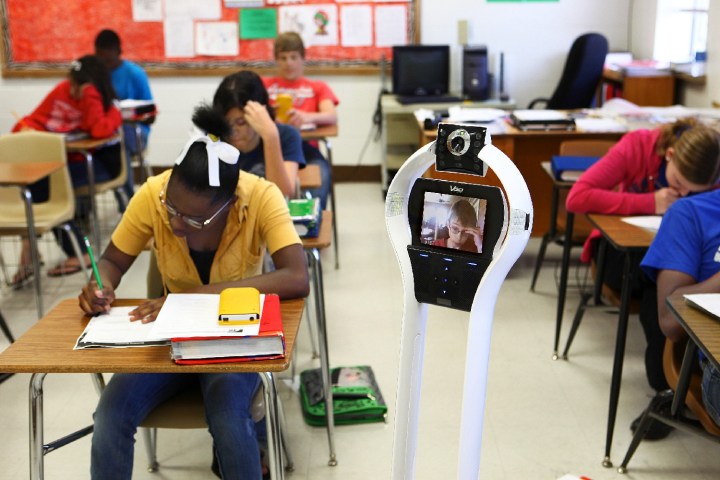
A new study by researchers at the University of California at Irvine examines how technology is making this possible for otherwise marginalized students through the use of telepresence robots in classrooms.
“For this work we were looking at the use of technology to include vulnerable populations who have traditionally been excluded from educational studies,” Veronica Newhart, a UCI doctoral student and lead author of the study, told Digital Trends. “In this particular study, that meant looking at children with chronic illness. We wanted to see how technology could work to include these children in their local school system using existing resources to provide them with both academic and social experiences, leading to healthy emotional and social development.”
The telepresence robots in question are essentially tablets mounted on Segways, boasting two-way video, cameras, microphones, and speakers.
It’s not ideal in every case, of course. Bullying is an unfortunate reality of many childhood experiences, and a kid who wants to fade into the background is going to find it a lot harder if their schoolyard avatar is an attention-grabbing bot on wheels.
However, this study serves as an important piece of research in a field that requires a whole lot more care and attention.
“If you’ve ever met a child who’s been sat at home for an extended period of time, waiting for a heart transplant, it’s a very lonely existence,” Newhart said. “We have the technology that can change that. Is it perfect? No. Is it right for everyone? No. But we need to study this and work out how [these tools] can assist an already vulnerable population.”


